Thymoquinone

Thymoquinone structure
|
Common Name | Thymoquinone | ||
|---|---|---|---|---|
| CAS Number | 490-91-5 | Molecular Weight | 164.201 | |
| Density | 1.1±0.1 g/cm3 | Boiling Point | 232.0±15.0 °C at 760 mmHg | |
| Molecular Formula | C10H12O2 | Melting Point | 167 ºC | |
| MSDS | Chinese USA | Flash Point | 103.9±0.0 °C | |
| Symbol |

GHS07 |
Signal Word | Warning | |
Use of ThymoquinoneThymoquinone is a nature product isolated from N. sativa. Thymoquinone possess antioxidant, anti-inflammatory, anti-cancer, antitumor activities and hepatoprotective properties[1]. |
| Name | 2-methyl-5-propan-2-ylcyclohexa-2,5-diene-1,4-dione |
|---|---|
| Synonym | More Synonyms |
| Description | Thymoquinone is a nature product isolated from N. sativa. Thymoquinone possess antioxidant, anti-inflammatory, anti-cancer, antitumor activities and hepatoprotective properties[1]. |
|---|---|
| Related Catalog | |
| References |
| Density | 1.1±0.1 g/cm3 |
|---|---|
| Boiling Point | 232.0±15.0 °C at 760 mmHg |
| Melting Point | 167 ºC |
| Molecular Formula | C10H12O2 |
| Molecular Weight | 164.201 |
| Flash Point | 103.9±0.0 °C |
| Exact Mass | 164.083725 |
| PSA | 34.14000 |
| LogP | 2.33 |
| Vapour Pressure | 0.1±0.5 mmHg at 25°C |
| Index of Refraction | 1.505 |
| InChIKey | KEQHJBNSCLWCAE-UHFFFAOYSA-N |
| SMILES | CC1=CC(=O)C(C(C)C)=CC1=O |
| Storage condition | 2~8°C |
| Water Solubility | Very slightly soluble (0.82 g/L) (25 ºC) |
CHEMICAL IDENTIFICATION
HEALTH HAZARD DATAACUTE TOXICITY DATA
MUTATION DATA
|
| Symbol |

GHS07 |
|---|---|
| Signal Word | Warning |
| Hazard Statements | H302-H315-H319-H335 |
| Precautionary Statements | P261-P305 + P351 + P338 |
| Personal Protective Equipment | dust mask type N95 (US);Eyeshields;Gloves |
| Hazard Codes | Xn: Harmful; |
| Risk Phrases | R22 |
| Safety Phrases | S26-S36 |
| RIDADR | NONH for all modes of transport |
| WGK Germany | 3 |
| RTECS | GU5330000 |
| HS Code | 2914690090 |
| Precursor 8 | |
|---|---|
| DownStream 8 | |
| HS Code | 2914690090 |
|---|---|
| Summary | 2914690090 other quinones。Supervision conditions:None。VAT:17.0%。Tax rebate rate:9.0%。MFN tariff:5.5%。General tariff:30.0% |
|
Thymoquinone Pretreatment Overcomes the Insensitivity and Potentiates the Antitumor Effect of Gemcitabine Through Abrogation of Notch1, PI3K/Akt/mTOR Regulated Signaling Pathways in Pancreatic Cancer.
Dig. Dis. Sci. 60 , 1067-80, (2015) The gemcitabine-insensitivity remains the main challenge for pancreatic cancer treatment. Thymoquinone, the predominant bioactive ingredient of Nigella sativa, has been shown to possess promising anti... |
|
|
Thymoquinone restores radiation-induced TGF-β expression and abrogates EMT in chemoradiotherapy of breast cancer cells.
J. Cell Physiol. 230(3) , 620-9, (2015) Radiotherapy remains a prime approach to adjuvant therapies in patients with early and advanced breast cancer. In spite of therapeutic success, metastatic progression in patients undergoing therapy, l... |
|
|
Evaluation of Antioxidant and Antibacterial Potentials of Nigella sativa L. Suspension Cultures under Elicitation.
Biomed Res. Int. 2015 , 708691, (2015) Nigella sativa L. (family Ranunculaceae) is an annual herb of immense medicinal properties because of its major active components (i.e., thymoquinone (TQ), thymohydroquinone (THQ), and thymol (THY)). ... |
| 5-Isopropyl-2-methyl-1,4-benzoquinone |
| 2-isopropyl-5-methyl-para-benzoquinone |
| 2-methyl-5-(propan-2-yl)cyclohexa-2,5-diene-1,4-dione |
| 2,5-Cyclohexadiene-1,4-dione, 2-methyl-5- (1-methylethyl)- |
| MFCD00001602 |
| p-Cymene-2,5-dione |
| Thymoquinone |
| 2-Isopropyl-5-methylcyclohexa-2,5-diene-1,4-dione |
| Thymoquinon |
| 2-Isopropyl-5-methyl-1,4-benzoquinone |
| 2-isopropyl-5-methylbenzo-1,4-quinone |
| 2-Isopropyl-5-methylbenzoquinone |
| 2-Methyl-5-iso-propylbenzoquinone |
| 2,5-Cyclohexadiene-1,4-dione, 2-methyl-5-(1-methylethyl)- |
| 2-isopropyl-5-methyl-p-benzoquinone |
| 2-methyl-5-isopropyl-1,4-benzoquinone |
| p-Mentha-3,6-diene-2,5-dione |
| EINECS 207-721-1 |
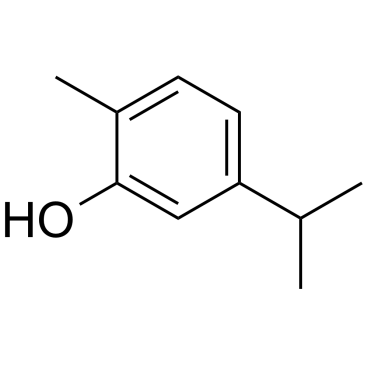 CAS#:499-75-2
CAS#:499-75-2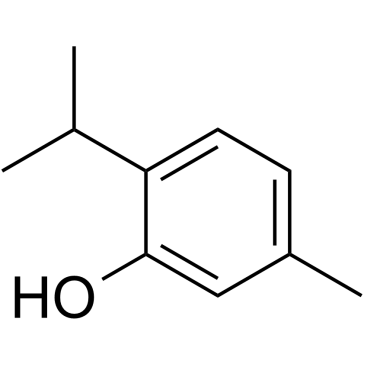 CAS#:89-83-8
CAS#:89-83-8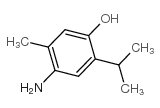 CAS#:1128-28-5
CAS#:1128-28-5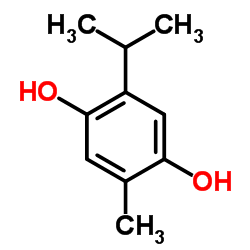 CAS#:2217-60-9
CAS#:2217-60-9 CAS#:99-87-6
CAS#:99-87-6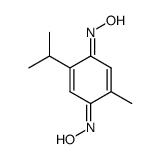 CAS#:74317-48-9
CAS#:74317-48-9 CAS#:6321-11-5
CAS#:6321-11-5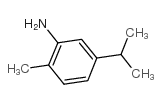 CAS#:2051-53-8
CAS#:2051-53-8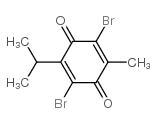 CAS#:29096-93-3
CAS#:29096-93-3 CAS#:6307-97-7
CAS#:6307-97-7 CAS#:17302-61-3
CAS#:17302-61-3 CAS#:14753-08-3
CAS#:14753-08-3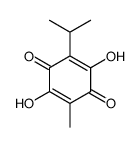 CAS#:2654-70-8
CAS#:2654-70-8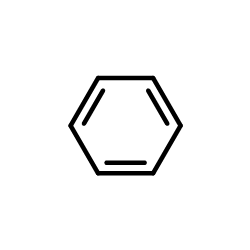 CAS#:71-43-2
CAS#:71-43-2
